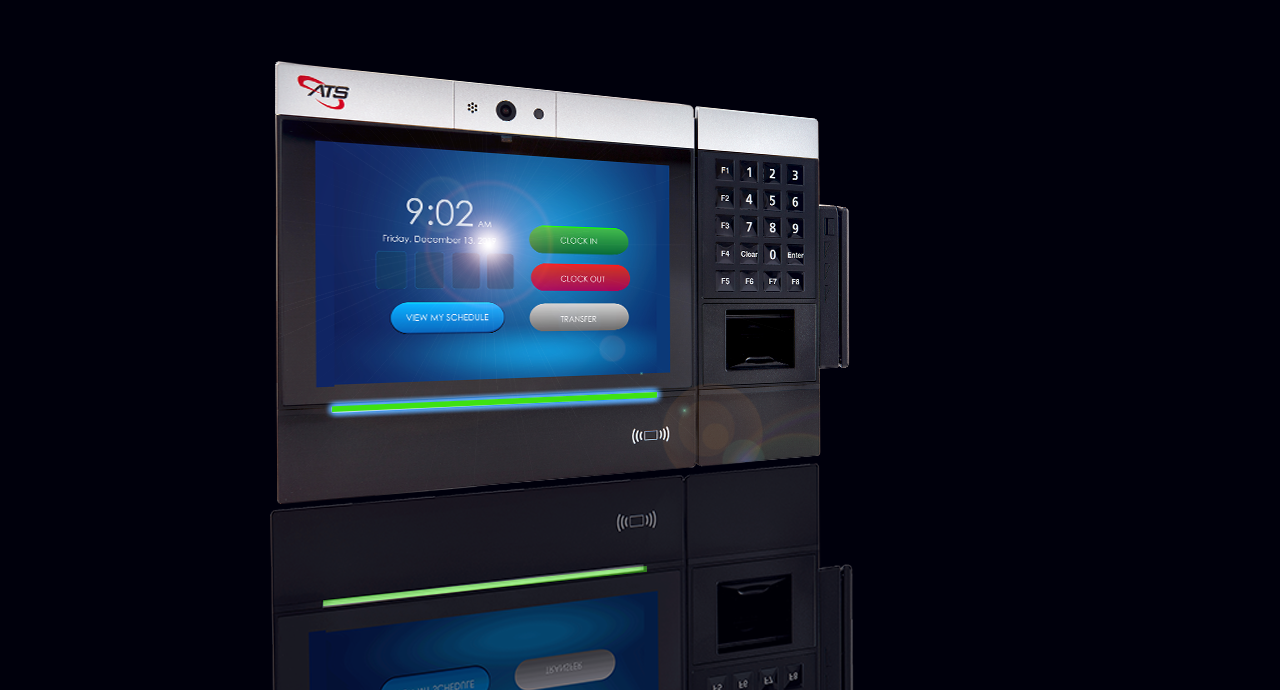Workers are clocking in and out at least twice a day - so what kind of employee time clock can you provide your customers that delivers a better and more positive user experience?
The answer to a better and more positive user experience is the stride80 from Accu-Time Systems. The stride80 includes numerous features that developers can use to enhance the employee self-service applications they develop to run on the terminal. One of the most visible features they can use is the LED light bar indicator at the bottom of the stride80. The LED light bar is software programmable so product teams can incorporate its use to any on-terminal application it creates.
Used well, color can improve the user’s experience because color sits high on the visual hierarchy. Put more plainly, color attracts attention. More specifically, color contrasts attract attention. A bright color shining against the black backdrop of the stride80’s casing will gain the worker’s attention, making it a useful tool to deliver simple information.
For example, a company can program the LED light on the stride80 tm to turn green when a match record is found, and the punch is recorded by the time clock. Ensuring employees can easily and visually identify a punch when clocking in and out. In fact, a company can decide to have the LED light illuminate one of the company’s brand colors as the “function completed” or other positive function status indicator color. Conversely, if the punch isn’t successful, the LED light bar can show “Red” as an unsuccessful transaction.
In addition to being able to program the LED light bar to illuminate different colors, developers can also use different illumination states to deliver different messages. Movement sits even higher on the visual hierarchy than color. Put movement and color together, and a dev team can send a strong signal to the user in front of the terminal to pay attention.
In this next use case, a flashing light can be used to indicate when the terminal is waiting on the employee to take some action. The terminal screen may be presenting an attestation, so the terminal is waiting for an answer. When the worker provides an answer to the terminal, the LED light bar can then settle into a steady state and perhaps in a different color, to communicate that the required action has been completed.
The possible ways the programmable LED light can be used in terminal-based applications is limited only by a product dev team’s imagination.
Don’t confuse the LED light Bar with the stride80’s LED camera light
Lights are so useful to a smooth user experience that we’ve also included a camera light indicator. The stride80’s 8-megapixel camera is an optional feature. Companies can deploy stride80 terminals without a camera, but if they do take advantage of camera functionality, the camera light will be there.
When the camera is in use, the light turns on to let the person standing in front of the stride80 that the camera has been activated. This light is one of the stride80’s privacy and security features. It creates a comfortable user experience by making it clear to people when the camera is operational.
A positive UX at the time clock improves policy adherence at the time clock
As an Android-based terminal, the stride80 was purpose-built to empower our partners to deploy and/or build their own suite of employee time keeping and self-service applications that their customers will value. As we all know, building an application is not the same thing as getting users to engage with the application regularly. That’s why providing a positive UX as part of an application is critical to companies getting the full benefit of the applications they want to use on the terminal.
The LED light is just one piece of the rich feature set of the stride80, all designed to provide a smooth, intuitive interface for the user and infinite possibilities for functionality development to your product team.


